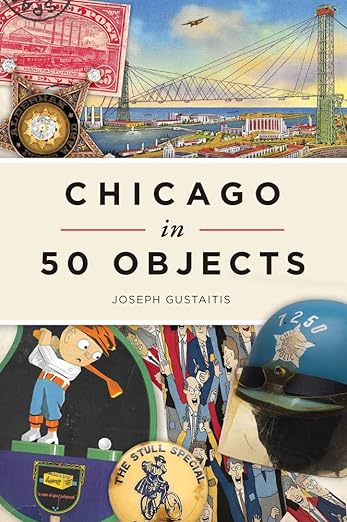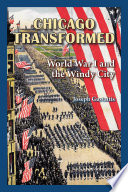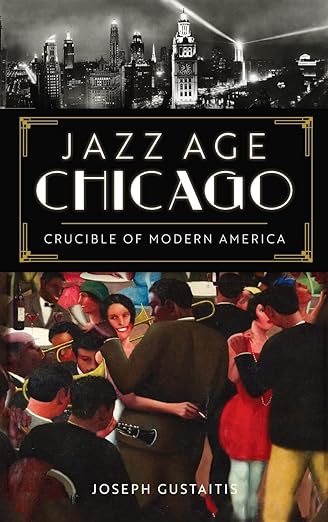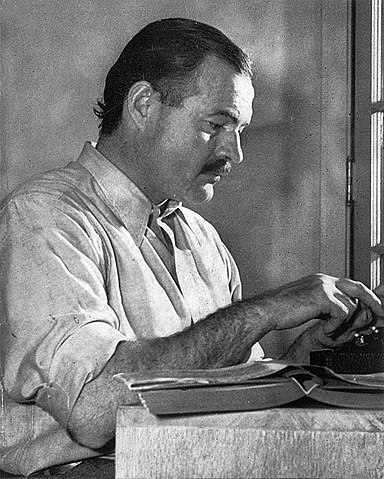
Joseph Gustaitis
Born:
Pen Name: None Connection to Illinois: Gustaitis lives in Chicago. Biography: Joe Gustaitis is a Chicago-based freelance writer and editor. He received his bachelor's degree from Dartmouth College and his master's and Ph.D. from Columbia University. He is the author of nearly 100 popular history articles. After working as an editor at Collier's Year Book, he became the humanities editor for Collier's Encyclopedia. He has also worked in television and won an Emmy Award for writing for ABC-TV's FYI program. He is a board member of the Society of Midland Authors.
Awards:
- Chicago Transformed Winner, ISHS Russell P. Strange Book of the Year Award, 2017
E-Mail: jagustaitis@yahoo.com
Web: https://www.josephgustaitis.com/
Selected Titles
 |
Chicago in 50 Objects ISBN: 1467146757 OCLC: The History Press 2021 When investigating the mysteries of Chicago's past, it's helpful to examine the physical evidence. From a fiddle played by a Chicago pioneer and a jersey worn by Michael Jordan to a relic of the Great Chicago Fire and the guns used in the St. Valentine's Day Massacre, these talismans chronicle the city's tragedies and triumphs. Some heirlooms shed new light on familiar figures like Louis Sullivan, while others commemorate the contributions of less heralded visionaries like Frances Glessner Lee. Joseph Gustaitis explores Chicago's history through fifty carefully chosen objects, a collection that includes stockyard knives, the world's first portable radio and Nelson Algren's typewriter. |
 |
Chicago Transformed: World War I and the Windy City ISBN: 0809334984 OCLC: 952109827 Southern Illinois University Pres 2016 It’s been called the “war that changed everything,” and it is difficult to think of a historical event that had a greater impact on the world than the First World War. Events during the war profoundly changed our nation, and Chicago, especially, was transformed during this period. Between 1913 and 1919, Chicago transitioned from a nineteenth-century city to the metropolis it is today. Despite the importance of the war years, this period has not been documented adequately in histories of the city. In Chicago in World War I: How the Great War Transformed a Great City, Joseph Gustaitis fills this gap in the historical record, covering the important wartime events, developments, movements, and people that helped shape Chicago. Gustaitis attributes many of Chicago’s changes to the labor shortage caused by the war. African Americans from the South flocked to Chicago during the Great Migration, and Mexican immigration increased as well. This influx of new populations along with a wave of anti-German hysteria—which nearly extinguished German culture in Chicago—changed the city’s ethnic composition. As the ethnic landscape changed, so too did the culture. Jazz and blues accompanied African Americans to the city, and Chicago soon became America’s jazz and blues capital. Gustaitis also demonstrates how the nation’s first sexual revolution occurred not during the 1960s but during the World War I years, when the labor shortage opened up unprecedented employment opportunities for women. These opportunities gave women assertiveness and freedom that endured beyond the war years. In addition, the shortage of workers invigorated organized labor, and determined attempts were made to organize in Chicago’s two leading industrial workplaces—the stockyards and the steel mills—which helped launch the union movement of the twentieth century. Gustaitis explores other topics as well: Prohibition, which practically defined the city in the 1920s; the exploits of Chicago’s soldiers, both white and black; life on the home front; the War Exposition in Grant Park; and some of the city’s contributions to the war effort. The book also contains sketches of the wartime activities of prominent Chicagoans, including Jane Addams, Ernest Hemingway, Clarence Darrow, Rabbi Emil Hirsch, John T. McCutcheon, “Big Bill” Thompson, and Eunice Tietjens. Although its focus is Chicago, this book provides insight into change nationwide, as many of the effects that the First World War had on the city also affected the United States as a whole. Drawing on a variety of sources and written in an accessible style that combines economic, cultural, and political history, Chicago in World War I: How the Great War Transformed a Great City portrays Chicago before the war, traces the changes initiated during the war years, and shows how these changes still endure in the cultural, ethnic, and political landscape of this great city and the nation. |
 |
Chicago's Greatest Year, 1893: The White City and the Birth of a Modern Metropolis ISBN: 0809332485 OCLC: Southern Illinois University Press, 2013 In 1893, the 27.5 million visitors to the Chicago World’s Fair feasted their eyes on the impressive architecture of the White City, lit at night by thousands of electric lights. In addition to marveling at the revolutionary exhibits, most visitors discovered something else: beyond the fair’s 633 acres lay a modern metropolis that rivaled the world’s greatest cities. The Columbian Exposition marked Chicago’s arrival on the world stage, but even without the splendor of the fair, 1893 would still have been Chicago’s greatest year. An almost endless list of achievements took place in Chicago in 1893. Chicago’s most important skyscraper was completed in 1893, and Frank Lloyd Wright opened his office in the same year. African American physician and Chicagoan Daniel Hale Williams performed one of the first known open-heart surgeries in 1893. Sears and Roebuck was incorporated, and William Wrigley invented Juicy Fruit gum that year. The Field Museum, the Art Institute of Chicago, and the Museum of Science and Industry all started in 1893. The Cubs’ new ballpark opened in this year, and an Austro-Hungarian immigrant began selling hot dogs outside the World’s Fair grounds. His wares became the famous “Chicago hot dog.” “Cities are not buildings; cities are people,” writes author Joseph Gustaitis. Throughout the book, he brings forgotten pioneers back to the forefront of Chicago’s history, connecting these important people of 1893 with their effects on the city and its institutions today. The facts in this history of a year range from funny to astounding, showcasing innovators, civic leaders, VIPs, and power brokers who made 1893 Chicago about so much more than the fair. |
 |
Jazz Age Chicago: Crucible of Modern America ISBN: 1540250946 OCLC: History PR 2022 When people imagine 1920s Chicago, they usually (and justifiably) think of Al Capone, speakeasies, gang wars, flappers and flivvers. Yet this narrative overlooks the crucial role the Windy City played in the modernization of America. The city's incredible ethnic variety and massive building boom gave it unparalleled creative space, as design trends from Art Deco skyscrapers to streamlined household appliances reflected Chicago's unmistakable style. The emergence of mass media in the 1920s helped make professional sports a national obsession, even as Chicago radio stations were inventing the sitcom and the soap opera. Join Joseph Gustaitis as he chases the beat of America's Jazz Age back to its jazz capital. |




